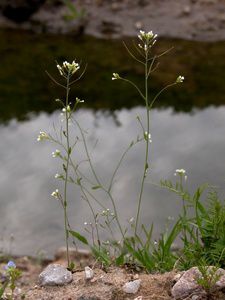-
 Haüy indices
Haüy indices
-
 Orbit
Orbit
-
 Local
Local
-
 Work hardening
Work hardening
-
 Molecular biology
Molecular biology
-
 Magnaporthe grisea
Magnaporthe grisea
-
 Mineral carbonation
Mineral carbonation
-
 Neurosurgery
Neurosurgery
-
 EUMETSAT
EUMETSAT
-
 Scrolling
Scrolling
-
 Frame
Frame
-
 Biomimetics
Biomimetics
-
 PVLAS
PVLAS
-
 Soda straws
Soda straws
-
 Toluene
Toluene
-
 Groin
Groin
-
 Pleuston
Pleuston
-
 Falcon 1
Falcon 1
-
 Triclinic system
Triclinic system
-
 Benzene
Benzene
-
 Insect
Insect
-
 Lewis acid
Lewis acid
-
 American space shuttle
American space shuttle
-
 SPOT
SPOT
-
 Wimp
Wimp
-
 Autopoiesis
Autopoiesis
-
 Dictionary attack
Dictionary attack
-
 Echocardiogram
Echocardiogram
-
 Sub-unit
Sub-unit
-
 Anticoagulant
Anticoagulant
Thale cress
The thale cress, or Arabidopsis thaliana, is a model organism studied in biology laboratories.
Thale cress classification
The thale cress is a plant, an eukaryotic organism that belongs to the Brassicaceae family.
Characteristics of the thale cress
The thale cress is a plant that can grow to heights of 20 to 25 centimetres, forming a rose of leaves at its base. It forms white flowers on its stems, which produce siliqua each containing about fifty seeds.
It has a linear double strand DNA genome, of 157 million base pairs shared over five chromosomes (which have been entirely sequenced since 2000). It multiplies relatively quickly, and only takes six to eight weeks to complete a cycle.
Laboratory use of the thale cress
The thale cress is a perfect model organism, since it presents all of the advantages required for laboratory use (small size, quick and numerous multiplication, small genome). This plant can also be easily transformed using of an agrobacteria (Agrobacterium tumefaciens).

Thale cress (Arabidopsis thaliana) is a small plant in the mustard family (Brassicaceae). © Biopix via eol.org, CC by-nc
Latest
Fill out my online form.



